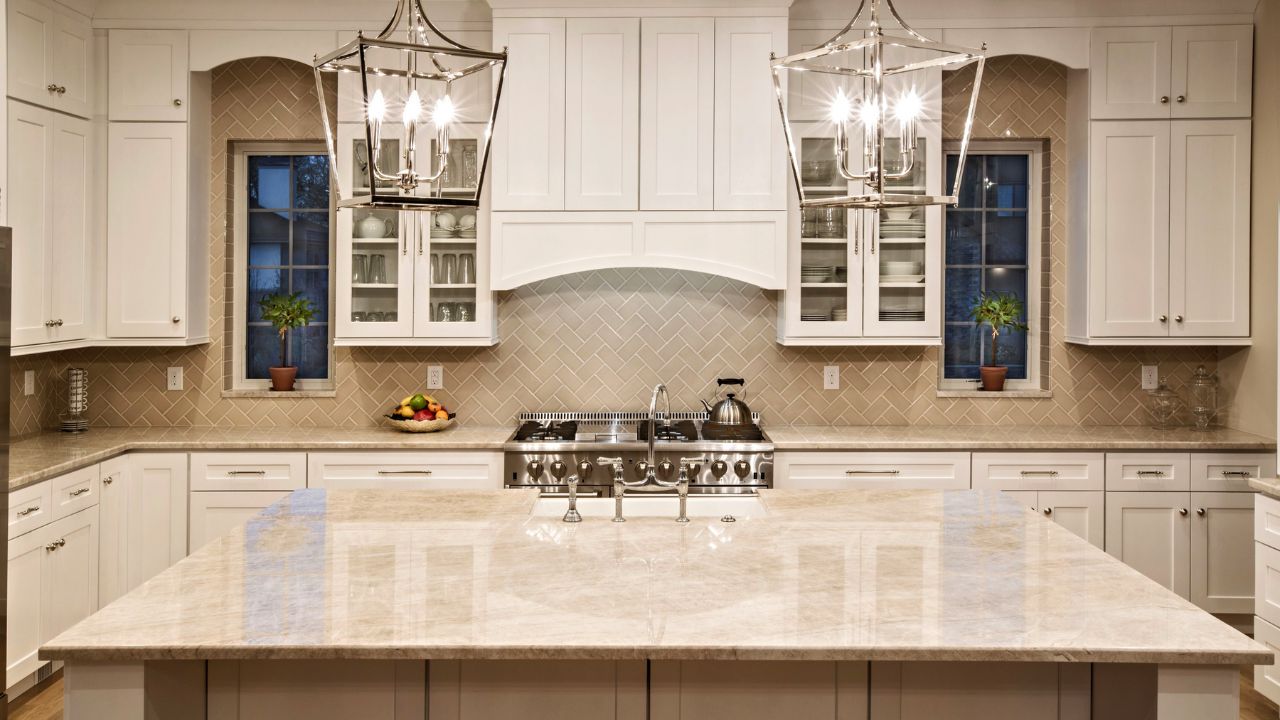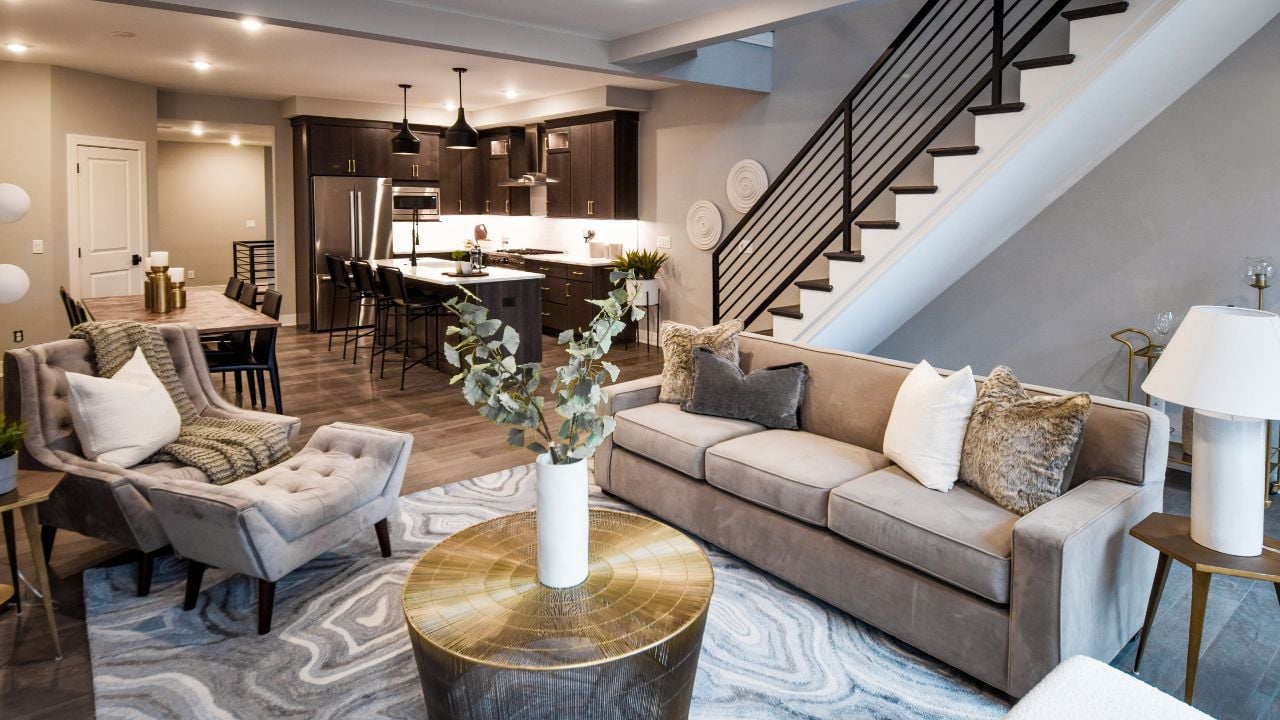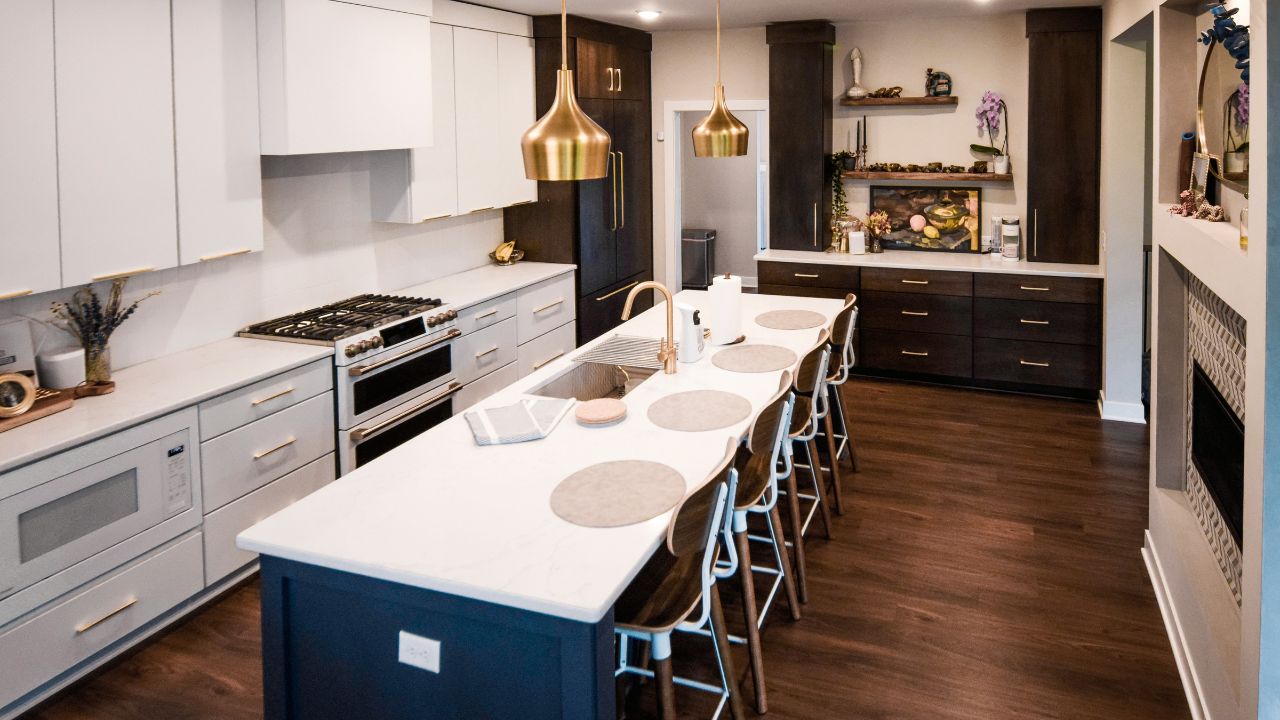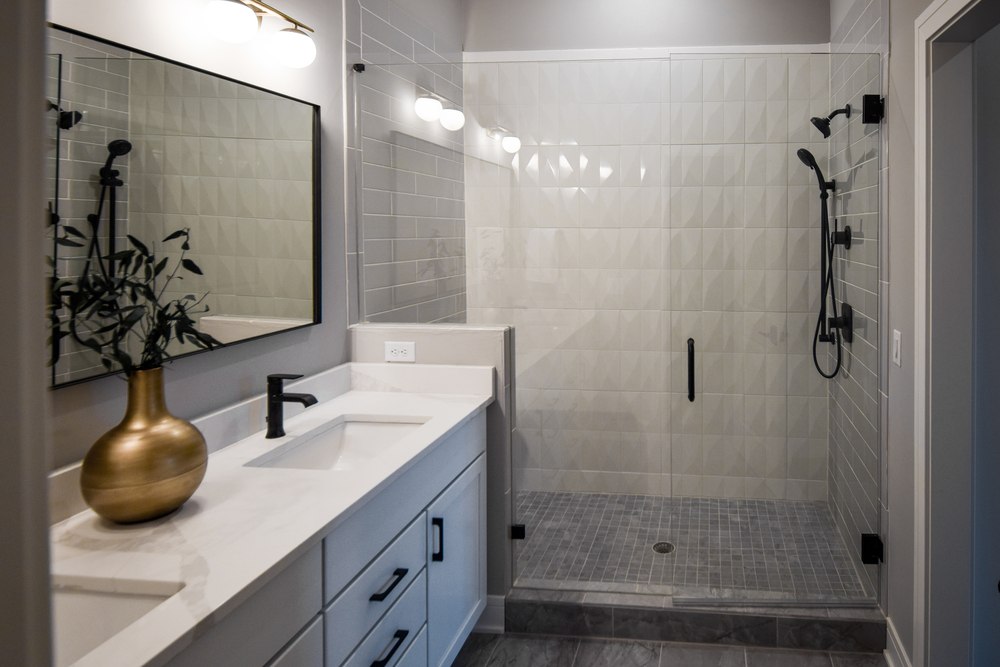Open Concept vs. The Traditional Floor Plan
When you’re looking to build a custom home in Cincinnati, one of the most important things to consider is the floor plan. Basically, a floor plan is...
3 min read
Chris Gorman Aug. 24, 2022

Marble has been an interior design darling for years now, but it does come with its flaws. Natural marble is expensive, it isn’t environmentally friendly, and you’re limited to what’s available, just to name a few. Fortunately, there are a couple of substitutions that have the same high-end presence without a lot of the same issues that you could choose for your custom home.
Cultured marble and quartz are excellent alternatives to marble, but why? When it’s time to choose your countertop, floor, or shower wall tile, which is better: cultured marble or quartz?
Cultured marble is nothing new. You’ve likely seen it in bathrooms for decades but it was called ‘faux marble’ instead. The material has gone through quite a makeover and is now being used in new homes everywhere. So, what is cultured marble? Also, what are the pros and cons of cultured marble?
Cultured marble is far less expensive than natural marble because of how it’s made. Cultured marble is a composite material made of a blend of ground natural marble and synthetic resins. The material can be dyed in any color possible. Once the blend is formed into a countertop or tile, it’s coated with a protective gel. Cultured marble can actually be formed in other shapes, such as sinks and bathtubs.
Cultured marble doesn’t need to be sealed as natural stone does. Also, if the material is stained, scratched, or burned, you can simply repair and refinish the surface.
Any color dye can be used with cultured marble but it’s more often seen in the colors that are popular right now. Gray and black are of those popular colors, but the most common combination is white with gray veining to mimic natural marble, which it does very well.
Cultured marble is durable, but not as much as one would think. It does stain more easily than quartz because it’s porous and the liquid will absorb very quickly. If the spill is an acidic liquid, like wine or citrus juice, the marble in the composite material will dissolve and this will result in damage to the surface. This also means the cultured marble can become damaged from using the wrong cleaning material.
Just like cultured marble, quartz has also been around for quite some time, both being developed and first used in the 1960s. And, they have both come a long way in appearance. Quartz, however, has exploded in popularity in the last few years as it’s begun to be made to mimic more types of natural stone.
Quartz is named for its main component, but it is also a man-made composite material and costs less than natural marble. Quartz ranges from having 90% ground quartz and 10% plastic resin to having 90% crushed post-consumer waste granite, marble, quartz, and other materials also with 10% resin. The amount of quartz varies, which affects the cost of the end product. The higher the quartz content, the more the slab of countertop or tiles will cost.
When the material is high in post-consumer products, the material is considered more ‘green’ or environmentally friendly. It’s also considered non-porous and is resistant to mold, stains, and mildew, making it easy to keep it germ-free. It also makes it a great material for the bathroom. Because of this, simple soap and water are all that’s needed to keep it clean.
Quartz is able to resist heat damage up to 400 degrees Fahrenheit and that’s why it’s used in places that are exposed to high heat for short periods of time.
Higher quality quartz will have a lower amount of resin and a higher amount of quartz. Higher quantities of quartz will make for a more lustrous surface and more closely resemble marble. A lower quartz content will have less sparkle. There are applications for both, however, so don’t count out the lower-priced quartz just yet.
Finally, quartz is also available in virtually every color, but like cultured marble, marble-like colors and patterns are more desired. Something that will affect the color is just how finely or coarsely ground the material is before blending with resin. A flakey, coarse ground will be more shimmery than a finely ground material.
Quartz resists heat damage but can be damaged by directly placing a hot pot on cold quartz. This specific combination causes cracking and discoloration, so you’ll still need to use a trivet or other protective layer between the piping hot pan and your quartz countertop.
It’s true that quartz is almost completely stain resistant because liquids can actually penetrate the surface, but stains can still happen on the surface. You should still strive to keep your counter clean and dry while prepping meals and especially afterward, so as to not leave tomato sauce on your counter, for example.
The pros list leans more heavily toward quartz for its stain resistance, antibacterial properties, non-porosity, and the near limitless variations in color and luster. Quartz does cost more than cultured marble by the square foot, but because it is more durable, it is a great investment. Where you can save on large pieces of quartz, like kitchen countertops, is the percentage of resin in the finished product as well as how much quartz is in the natural stone mix.
When you're faced with choosing your countertops, shower walls, or anywhere else you’d use marble, cultured marble, or quartz, your custom home design team should be able to help you figure out the best option for your home based on your budget, style, and how you use the space.
Chris Gorman Homes is a design-build firm in Cincinnati that values the design goals of each client and works to address each concern, down to the heat resistance of their kitchen counter. To learn more about our custom home build process and to discuss how to start your custom home design process, contact Chris Gorman Homes today.

When you’re looking to build a custom home in Cincinnati, one of the most important things to consider is the floor plan. Basically, a floor plan is...

When you’re designing your home, there are so many different style directions it could go, that it may be really difficult to choose. The trick is to...

Photo by Marcelle Guilbeau, Interior Designer - Look for pool pictures